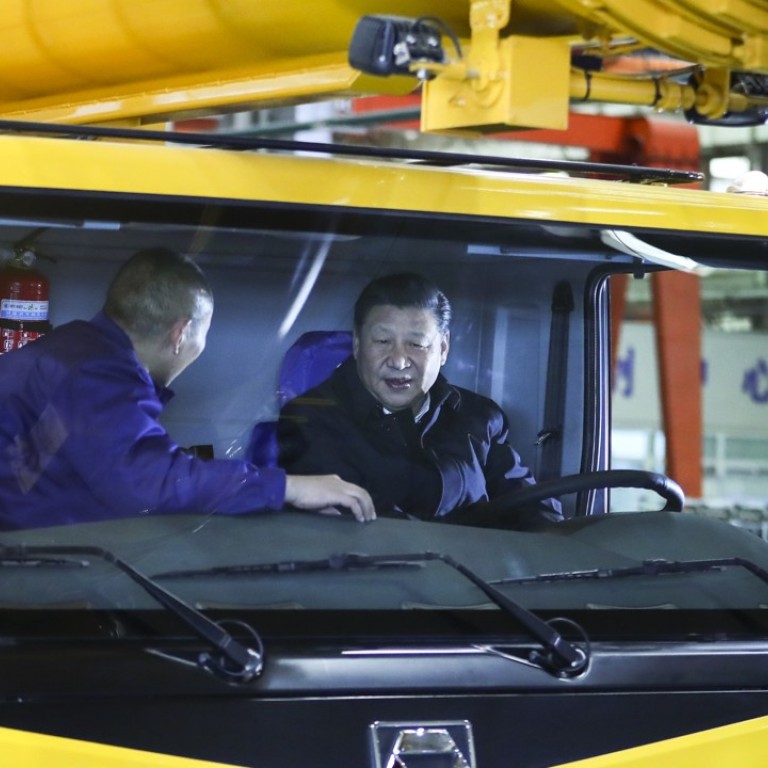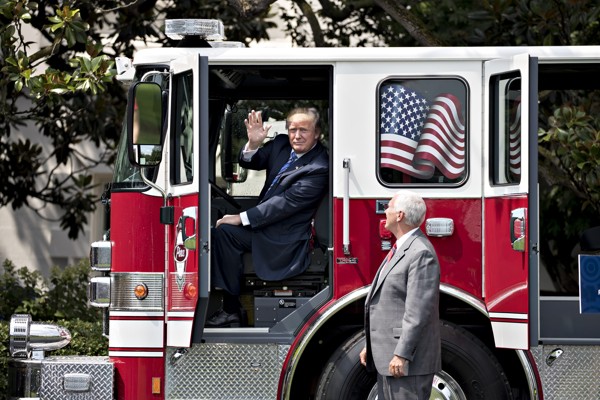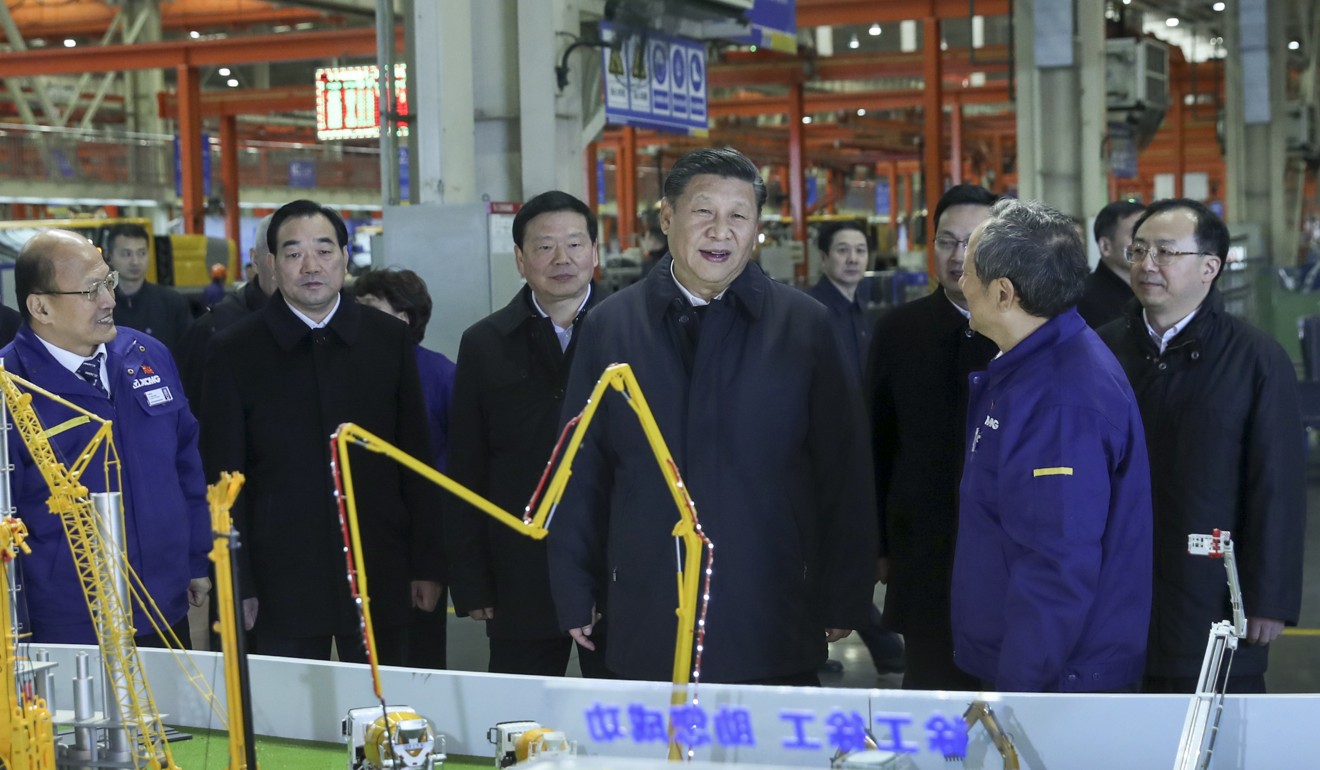
Just as Trump did for US, Xi gets in driving seat to promote ‘Made in China’
Chinese president tours construction machinery maker in Xuzhou to send message about the ‘real economy’
Chinese President Xi Jinping climbed into the cab of an all-terrain crane on Tuesday afternoon in a show of support for “Made in China” products during his first such inspection tour since he cemented his power at the Communist Party congress in October.
Just as US President Donald Trump did in July to promote “Made in America” products – when Trump got into a fire truck parked behind the White House – Xi sat in the driving seat of the XCA220 crane during his visit to the Xuzhou Construction Machinery Group (XCMG).
He told media that China must focus on the “real economy” by adopting new technologies, the official Xinhua news agency reported.
“China must always give priority to building a strong real economy,” Xi was quoted as saying. “To develop the real economy, [China] must develop manufacturing, especially through innovation, grasping and using key technologies.”

The president made the comments days before the annual economic work conference in Beijing, at which Xi and hundreds of top party leaders will set the policy direction for the next year.
China under Xi’s leadership in the last five years has avoided an “economic hard landing” or financial crisis, but there are concerns that its credit-fuelled growth model has led to an excessively exuberant financial sector and weakened its economic foundations.
Like Xi’s other inspection tours across the country, his visit to XCMG has political and economic implications.
A decade ago, the company in Xuzhou, in eastern Jiangsu province – one of the oldest and largest construction machinery makers in China – found itself at the centre of a national debate.
Its owner, the municipal government, had put the debt-laden company up for sale in 2004. US private equity firm Carlyle Group agreed in October the following year to pay US$375 million for an 85 per cent stake in the company.

But the planned deal caused controversy and met with a nationalist backlash in state media, which carried numerous reports that the US was buying the backbone of China’s industrial sector.
The high-profile boss of equipment maker Sany Group, Xiang Wenbo, then made a higher offer for XCMG to price out Carlyle.
That prompted the central government to step in and block the deal with Carlyle, with the Xuzhou-based manufacturer emerging as a symbol of China’s industrial might – and remaining state-owned.
The company’s products now compete with brands such as Caterpillar and Komatsu at home and abroad. The XCA220 that was in the spotlight on Tuesday is a 55-tonne crane that can be used in mines and ports, and there were more than 30 patents involved in developing the vehicle alone, according to Xinhua.
Xi is on a renewed push to develop the country’s manufacturing and technology industries, but he is also trying to tackle speculation in the financial and property sectors. At a Politburo meeting on Friday, Xi listed control of risks, especially from finance, as a key priority. At the factory on Tuesday, Xi said China must align financial resources to economic activities on the ground to “stop them from being diverted from their intended purposes”.
Liu Xuezhi, an analyst with the Bank of Communications, said too much credit easing and fairly lacklustre economic activities had led to excessive trades in the financial sector, and regulators were now working to clean it up. Liu expected Xi to target companies that had borrowed too much but failed to improve efficiency.
Next week’s conference will be important for Xi to refine his “Xiconomics” economic programme.
Xi has embraced “supply-side structural reform” as a hallmark of his economic policy in recent years – a vaguely defined strategy of phasing out excess industrial capacity, controlling financial leveraging and reducing business costs.

